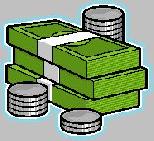
 |
|
| Financial Terms | |
| Backwardation |
|
Information about financial, finance, business, accounting, payroll, inventory, investment, money, inventory control, stock trading, financial advisor, tax advisor, credit.
Main Page: money, credit, financial, business, inventory, finance, inventory control, payroll, |
Definition of Backwardation
BackwardationA market condition in which futures prices are lower in the distant delivery months than in
Related Terms:Normal backwardation theoryHolds that the futures price will be bid down to a level below the expected CARs (cumulative abnormal returns)a measure used in academic finance articles to measure the excess returns an investor would have received over a particular time period if he or she were invested in a particular stock. Abnormal returnsPart of the return that is not due to systematic influences (market wide influences). In Agency theoryThe analysis of principal-agent relationships, wherein one person, an agent, acts on behalf of Arbitrage Pricing Theory (APT)An alternative model to the capital asset pricing model developed by Bubble theorySecurity prices sometimes move wildly above their true values. Cumulative abnormal return (CAR)Sum of the differences between the expected return on a stock and the  Liquidity theory of the term structureA biased expectations theory that asserts that the implied forward Local expectations theoryA form of the pure expectations theory which suggests that the returns on bonds Lognormal distributionA distribution where the logarithm of the variable follows a normal distribution. Market segmentation theory or preferred habitat theoryA biased expectations theory that asserts that the Modern portfolio theoryPrinciples underlying the analysis and evaluation of rational portfolio choices Normal annuity formThe manner in which retirement benefits are paid out. Normal deviateRelated: standardized value Normal probability distributionA probability distribution for a continuous random variable that is forms a Normal portfolioA customized benchmark that includes all the securities from which a manager normally  Normal random variableA random variable that has a normal probability distribution. Normalizing methodThe practice of making a charge in the income account equivalent to the tax savings Preferred habitat theoryA biased expectations theory that believes the term structure reflects the Pure expectations theoryA theory that asserts that the forward rates exclusively represent the expected Standardized normal distributionA normal distribution with a mean of 0 and a standard deviation of 1. Static theory of capital structuretheory that the firm's capital structure is determined by a trade-off of the net cost of normal spoilagethe cost of spoiled work less the estimated disposal value of that work normal capacitythe long-run (5–10 years) average production normal cost systema valuation method that uses actual normal lossan expected decline in units during the production process normal spoilagespoilage that has been planned or foreseen; is a product cost theory of constraints (TOC)a method of analyzing the bottlenecks Normal (bell-shaped) distributionIn statistics, a theoretical frequency Spoilage, abnormalSpoilage arising from the production process that exceeds the normal Spoilage, normalThe amount of spoilage that naturally arises as part of a production expectations theory of exchange ratestheory that expected spot exchange rate equals the forward rate. pecking order theoryFirms prefer to issue debt rather than equity if internal finance is insufficient. random walk theorySecurity prices change randomly, with no predictable trends or patterns. trade-off theoryDebt levels are chosen to balance interest tax shields against the costs of financial distress. Quantity Theory of Moneytheory that velocity is constant, and so a change in money supply will change nominal income by the same percentage. Formalized by the equation Mv = PQ. Real Business Cycle TheoryBelief that business cycles arise from real shocks to the economy, such as technology advances and natural resource discoveries, and have little to do with monetary policy. Related to : financial, finance, business, accounting, payroll, inventory, investment, money, inventory control, stock trading, financial advisor, tax advisor, credit. |